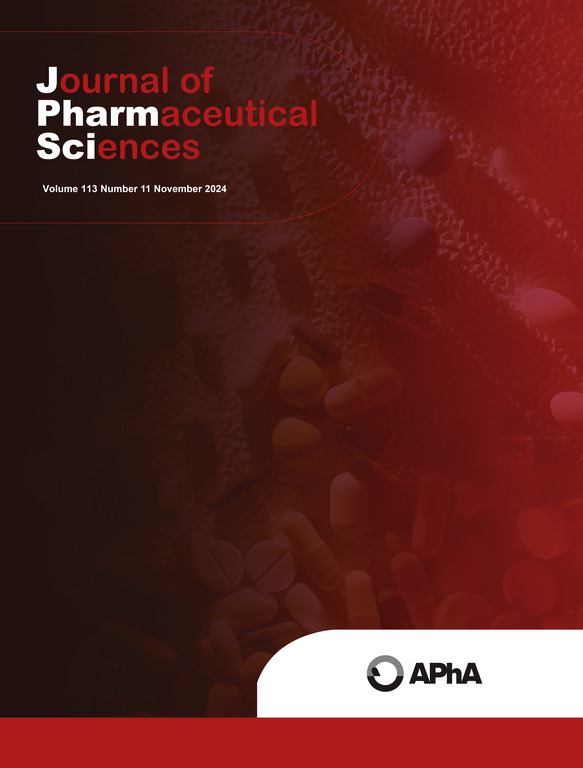PLGA/TPGS nanoparticles for docetaxel delivery: The pegylation effect on nanoparticle physicochemical properties and uptake and cytotoxicity in prostate cancer cells
IF 3.7
3区 医学
Q2 CHEMISTRY, MEDICINAL
引用次数: 0
Abstract
Prostate cancer is the most common malignancy in men worldwide and docetaxel (DTX) is the treatment of choice. However, both the drug and formulation excipients for drug solubilization can cause side effects. In this context, the development of polymeric nanoparticles offers advantages to improve drug delivery and reduce toxicity. In the present work, factorial design was used to evaluate the effect of the amount of poly(L-lactide-co-glycolide) (PLGA) or poly(L-lactide-co-glycolide acid-polyethylene glycol) (PLGA-PEG), D-Alpha-Tocopheryl Polyethylene Glycol Succinate (TPGS) and ratio between aqueous and oily phases on the nanoparticle characteristics. The nanocarriers were characterized regarding particle size, polydispersity, zeta potential, DTX encapsulation efficiency, morphology by transmission electron microscopy, DSC, TGA and FTIR. It was evaluated in vitro for cytotoxicity and cellular uptake in prostate cancer cells. Pegylated nanoparticles, which have a different composition (TPGS%, AP:OP ratio), reduced the nanoparticle size to 105.97 ± 5.16 nm, in PDI 0.13 ± 0.03, zeta potential of -34.73 ± 1.19 mV and increased the encapsulation efficiency to 96.78 ± 1.20%. Characterization by DSC, TGA and FTIR confirmed drug encapsulation and showed colloidal stability. Pegylated nanoparticles were more stable upon serum incubation and adsorbed less proteins. In conclusion, the pegylation of the nanoparticles affected the physicochemical parameters. Also, the pegylation of nanoparticles decreased uptake by macrophages. Finally, cellular uptake and cell cytotoxicity were higher in tumor cells when compared to non-tumor cells, although they were not affected by pegylation.

用于多西紫杉醇递送的PLGA/TPGS纳米颗粒:聚乙二醇化对纳米颗粒理化性质、摄摄和前列腺癌细胞毒性的影响。
前列腺癌是世界范围内男性最常见的恶性肿瘤,多西他赛(DTX)是治疗的首选。然而,药物和药物增溶制剂辅料都可能引起副作用。在这种情况下,聚合物纳米颗粒的发展在改善药物传递和降低毒性方面具有优势。本研究采用因子设计评价聚(l -丙交酯-共乙二醇酯)(PLGA)或聚(l -丙交酯-共乙二醇酸-聚乙二醇)(PLGA- peg)、d- α -生育酚基聚乙二醇琥珀酸酯(TPGS)的用量以及水相和油相比对纳米颗粒特性的影响。采用透射电镜、差热分析、热重分析和红外光谱对纳米载体的粒径、多分散性、zeta电位、DTX包封效率、形貌进行了表征。体外评估了前列腺癌细胞的细胞毒性和细胞摄取。不同组成(TPGS%, AP:OP比)的聚乙二醇化纳米粒子使纳米颗粒尺寸减小到105.97±5.16 nm, PDI为0.13±0.03,zeta电位为-34.73±1.19 mV,包封效率提高到96.78±1.20%。通过DSC、TGA和FTIR表征,证实了药物的包被性和胶体稳定性。聚乙二醇化纳米颗粒在血清孵育中更稳定,吸附的蛋白质更少。综上所述,聚乙二醇化修饰影响了纳米颗粒的理化参数。此外,聚乙二醇化纳米颗粒减少巨噬细胞的摄取。最后,与非肿瘤细胞相比,肿瘤细胞的细胞摄取和细胞毒性更高,尽管它们不受聚乙二醇化的影响。
本文章由计算机程序翻译,如有差异,请以英文原文为准。
求助全文
约1分钟内获得全文
求助全文
来源期刊
CiteScore
7.30
自引率
13.20%
发文量
367
审稿时长
33 days
期刊介绍:
The Journal of Pharmaceutical Sciences will publish original research papers, original research notes, invited topical reviews (including Minireviews), and editorial commentary and news. The area of focus shall be concepts in basic pharmaceutical science and such topics as chemical processing of pharmaceuticals, including crystallization, lyophilization, chemical stability of drugs, pharmacokinetics, biopharmaceutics, pharmacodynamics, pro-drug developments, metabolic disposition of bioactive agents, dosage form design, protein-peptide chemistry and biotechnology specifically as these relate to pharmaceutical technology, and targeted drug delivery.

 求助内容:
求助内容: 应助结果提醒方式:
应助结果提醒方式:


